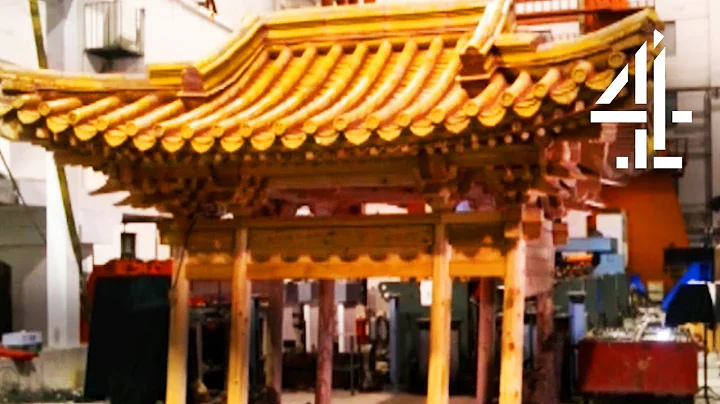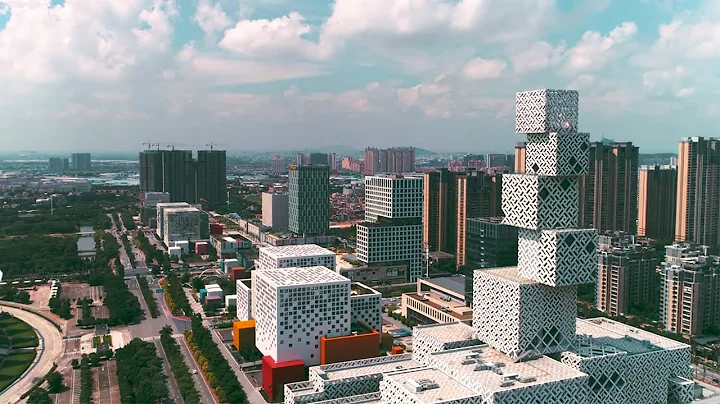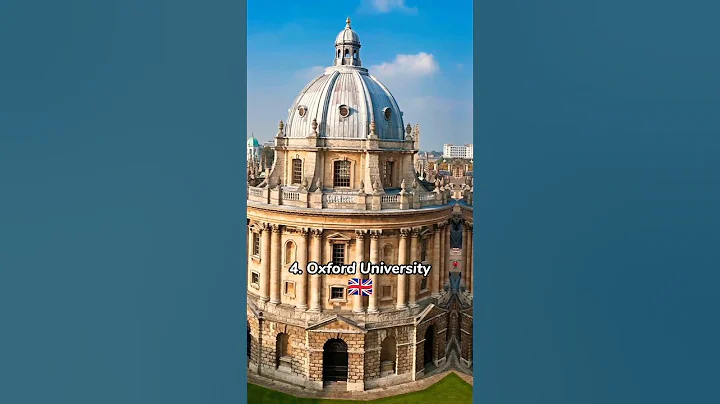British carpenters find it difficult to understand that in more than 600 years, the Forbidden City has experienced more than 200 extremely destructive earthquakes. Why do the Chinese never worry that it will collapse?
Including the major earthquake that razed Tangshan to the ground. The epicenter at that time was only 150 kilometers away from the Forbidden City. Many ancient buildings in Beijing were damaged, but the Forbidden City remained unmoved. How much effort and wisdom of the ancients have been gathered into ancient buildings like the Forbidden City, and what black technologies are hidden that we cannot answer in modern times?

Ancient Chinese buildings that can withstand a 10-magnitude earthquake
In order to clarify these problems, in 2017, British carpenters copied several models with the same structure as the Forbidden City at a scale of 1:5, and then put them into simulation On the earthquake platform, we began to test how many magnitude earthquakes it could withstand. The staff of
first adjusted the earthquake level to 4.5. Such an earthquake will cause obvious vibrations, which is enough to cause cracks in the walls of some simple buildings or even collapse directly. The Forbidden City model swayed greatly as a whole and looked shaky. However, it never collapsed during the 30-second test.

Judging from the strong shaking of the Forbidden City model, foreign experts believe that it will definitely fall apart before it can survive a magnitude 6 earthquake. However, the Chinese experts present smiled at each other and said nothing. When
and other on-site staff really adjusted the earthquake level to level 6, foreign experts were surprised to find that the model was shaking almost the same as before, but there was still no sign of collapse.
Subsequently, the magnitude was adjusted to 7.5, which is an amplitude that can only be displayed by many major earthquakes. I saw that the Forbidden City model was shaking violently, and the internal walls collapsed. However, the entire wooden structure still did not collapse, and the connections between the main beams and columns were not disconnected.

The magnitude is still increasing. This time it rose directly to magnitude 9.5. This is the strongest earthquake intensity in human history. However, the result is the same as before. Reluctant foreign experts adjusted the magnitude of the earthquake to the maximum level 10. After 30 seconds, the entire audience was silent. The entire model was still standing intact on the seismic platform.

Foreign experts were finally convinced, but they were really puzzled. How could such a fragile-looking wooden frame without a single screw withstand a magnitude 10 earthquake? Chinese experts stepped forward and pointed out to foreign experts the red marks under the columns of the Forbidden City model. It turns out that the entire building has moved a few centimeters compared to before the earthquake.

The Forbidden City has no foundation?
Architects all over the world are wondering why Chinese ancient buildings are so earthquake-resistant? In fact, Chinese architects do not agree with the term "earthquake-resistant". They prefer to believe that ancient buildings rely on their own unique structures to absorb and resolve the impact of earthquakes, which is quite similar to Taoist Tai Chi's "four or two moves a thousand pounds" mean. So how is this done?
Let’s first take a look at how modern architecture builds houses. When modern people build a house, they must first lay the foundation, insert the pillars into the foundation, then build load-bearing walls, and finally cap the building. One disadvantage of such a house is that it is too "rigid". The ancients said that "it is easy to break if it is too rigid", and the same is true for this house.

The columns of modern buildings are always inserted into the ground. They seem to be very stable and can withstand many earthquakes. In fact, when major earthquakes occur, more than 95% of buildings collapse from top to bottom. Your columns may be able to withstand the impact of an earthquake, but when the upper floors of the house begin to shake from side to side, the rigid columns will snap in an instant, causing the entire house to collapse.

The biggest difference between ancient buildings is that the columns are not directly inserted into the ground, and their structures are more complex. Take the Hall of Supreme Harmony in the Forbidden City as an example. Below its columns is a column base (slab plate), which is the disk-like structure on the ground; there are also stilt piers made of stone bricks under the column base.
It looks like the column is inserted into the ground, but in fact it can move within the scope of the pier without causing the column to break.

Many people may say, isn't this house just like building blocks placed on the ground, without a foundation? In the past, some people did say that the buildings of the Forbidden City had no foundation, and even used this to question the ancient Chinese's ignorance of architecture. But have you ever thought about how a group of houses without foundations withstood countless earthquakes for more than 600 years?

So the Forbidden City has a foundation. Not only does it exist, but the ancients paid most attention to the construction of the foundation. In the classical architectural book " to create French ", there are detailed records of where to build the foundation, how long and how wide to build it, and even where to use stone bricks instead, and where to use wood. What movements are used and how many squares of soil are added are all written very carefully. It can be said that the foundation of the Forbidden City, its complex structure and exquisite materials are unique.

The foundation structure of the Forbidden City
Mortise and tenon joints are the soul of ancient buildings
Of course, it is not difficult to build this foundation. The most difficult thing is to repair the roof. When it comes to the roof of ancient buildings, the mortise and tenon joint structure is inseparable. It is no exaggeration to say that it is the soul of ancient buildings.
The mortise and tenon structure consists of two parts: tenons and mortises, which can be nested and fixed to increase the stability of the building. A window alone has 500-1000 mortise and tenon joints, and if you want to build a large building The roof probably wouldn't be complete without tens of thousands of small parts.

mortise and tenon
So, why did the ancients make their houses so complicated? Can't it be as straight as modern steel and concrete? It really doesn’t work. Let’s look at the function of the mortise and tenon structure to understand.
When a roof is constructed with tens of thousands of mortise and tenon joints, when an earthquake occurs, each part has the function of absorbing the earthquake impact force, and then continuously transmits this force downwards, playing the role of unloading force in the process of transmission. . Therefore, we can see that during an earthquake, even if the columns have shaken violently, the roof remains motionless.

At the same time, because there are very tiny gaps left when the mortise and tenon structure is inlaid, it is not as rigid as a piece of reinforced concrete. Instead, it has a certain degree of flexibility and elasticity, allowing the material to deform to a certain extent, so it is not easy to break and collapse.
In 1973, the Chinese archaeological team discovered this magical mortise and tenon structure at the Hemudu Cultural Site in Zhejiang. According to tests, they are 7,000 years old. In fact, the mortise and tenon structure is not the most unique invention of ancient Chinese architecture. In the archeology of primitive ruins in Germany, similar mortise and tenon structures were also discovered, and they also originated 7,000 years ago. Therefore, China may not be the originator of the mortise and tenon structure.

Ancient architecture and core technology - Dougong
However, it is worth noting that in the and Warring States era, the mortise and tenon structure was further developed, and the Dougong structure was derived, which can truly be regarded as the essence of ancient Chinese architecture. Not only because the bracket structure has not been found in other civilizations in the world, but also because it makes ancient Chinese architecture more practical and beautiful.

Dougong is mainly used at the intersection of building columns, beams and roofs. Its main function is to enhance the stability of the house. From the Warring States Period to the Tang Dynasty and then to the Ming and Qing dynasties, architectural masters of all dynasties have strengthened the role of brackets. However, the Japanese lost the soul of brackets when imitating the architecture of the Tang Dynasty. Therefore, many people think that Japanese ancient buildings look like Very awkward.

In fact, the structure of Dougong is not only used to build houses, but also plays a vital role in the construction of bridges.
In January 1975, a batch of 429-ton mechanical components was urgently shipped to Yanshan Petrochemical Company. However, because this batch of goods was so heavy, experts could not guarantee that several new bridges on the Yongding River could complete this task.
- Experts said that it seems that this task can only be left to the ancient bridge. It does not need to be reinforced and it will be fine.

You must know that this is an ancient bridge built 800 years ago. Is it really more reliable than the newly built bridge at that time?
When the 429 tons of equipment was driven onto the bridge, everyone was sweating because the bridge arch was sinking, with the maximum sinking amount reaching 0.52 mm. They saw that the ancient bridge would sink into the river together with the equipment. Unexpectedly, 20 minutes later, the equipment passed safely and the ancient bridge was safe and sound. It turns out that the main reason why the arch bridge sank was because the brackets of the bridge had a certain degree of toughness. Although slight deformation occurred, they did not collapse. And this magical ancient bridge is the famous Marco Polo Bridge .

Marco Polo Bridge
The inheritance of ancient architecture
Looking back today, we can still feel the unique wisdom of Taoism from this kind of "hard and soft" classical architecture. However, modern people who have mastered countless high technologies can no longer copy this kind of ancient architecture. Perhaps there are some mysteries hidden in the "technology" of the ancients that are difficult to solve by modern physics and mathematics. And we have only scratched the surface from ancient architecture.

Tengwang Pavilion
Sometimes, modern people not only have difficulty copying classical buildings, but even destroy them. In Yingxian County, Shanxi Province, there is the world's tallest wooden pagoda certified by Guinness World Records. It is the Sakyamuni Pagoda, also known as the Yingxian Wooden Pagoda. It was built in 1056 and is known as the "Three Wonderful Towers in the World" together with the Leaning Tower of Pisa in Italy and the Eiffel Tower in Paris.

Yingxian Wooden Pagoda
This ancient wooden pagoda has experienced nearly a thousand years of wind and sun and more than 10 major earthquakes, but it still stands. However, during the war in 1926, it was attacked by artillery fire from the Feng Yuxiang army. It was hit by more than two hundred bullets but did not collapse. The amazing thing is: even in the war years, the fire ignited by the shells hitting the tower will be extinguished in an instant... (from Xinmin Evening News)
Despite this, the current situation of the wooden tower is not optimistic. It is said that the Leaning Tower of Pisa is only crooked It tilted 3.99 degrees, but the second floor of the Yingxian Wooden Tower tilted 15 degrees, which was shocking!

Today, we can already use machines to continuously and automatically produce mortise and tenon parts, but we can no longer build buildings like the Yingxian Wooden Tower.





















